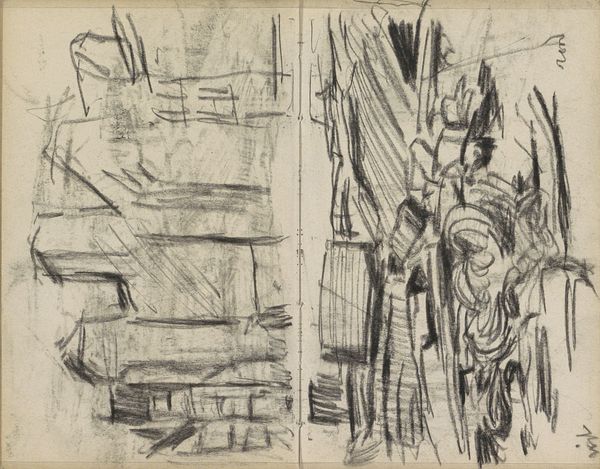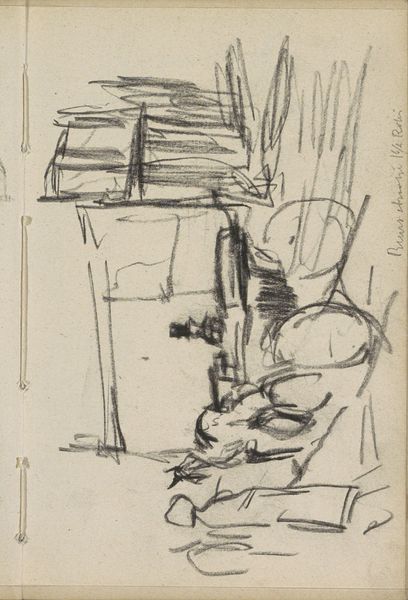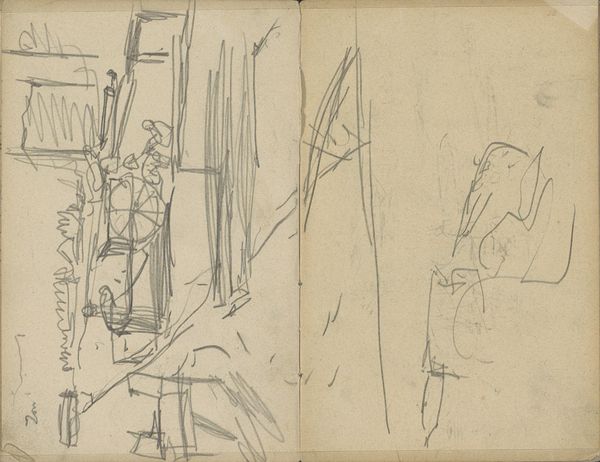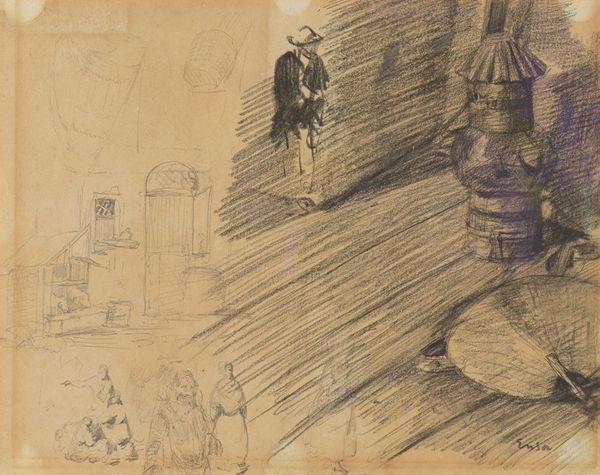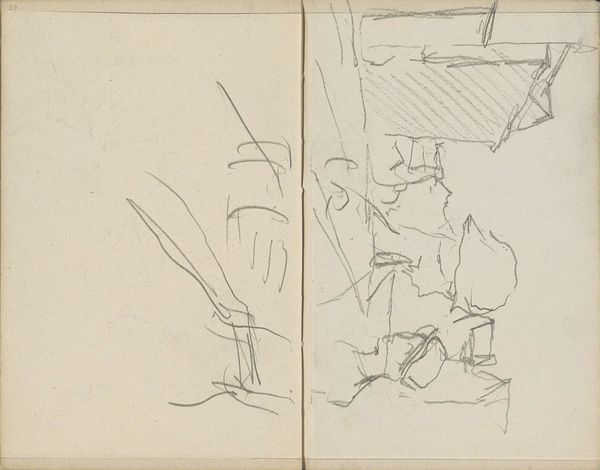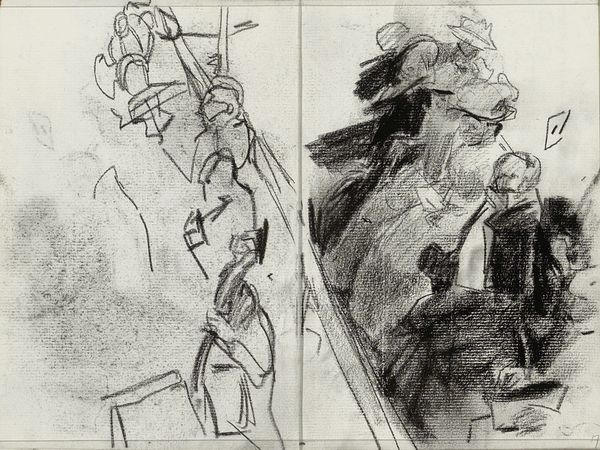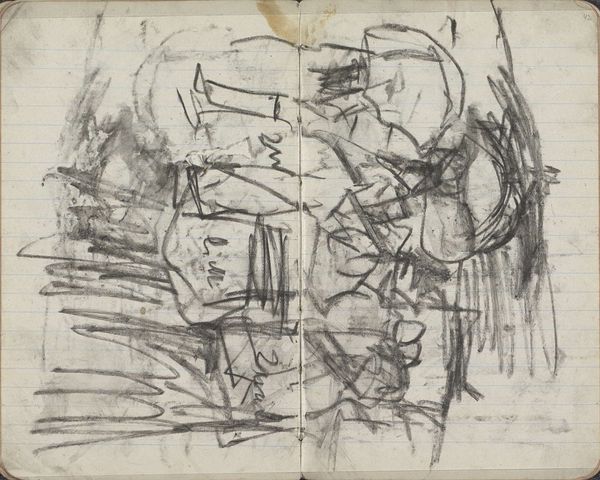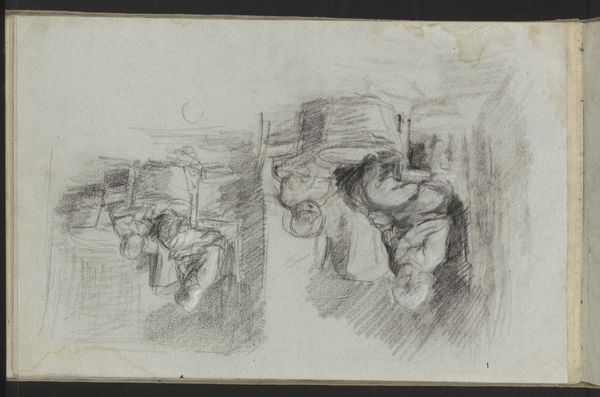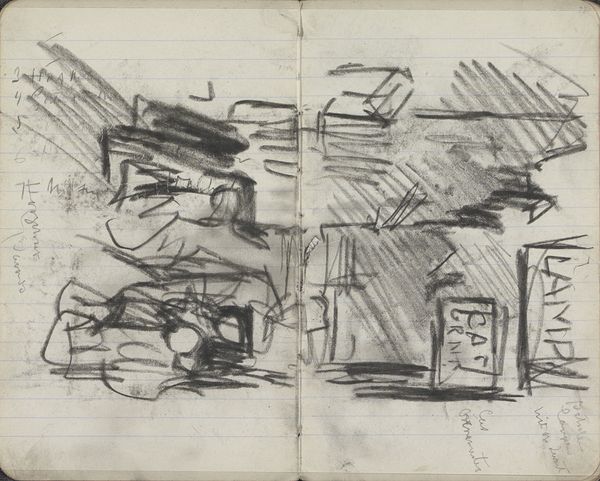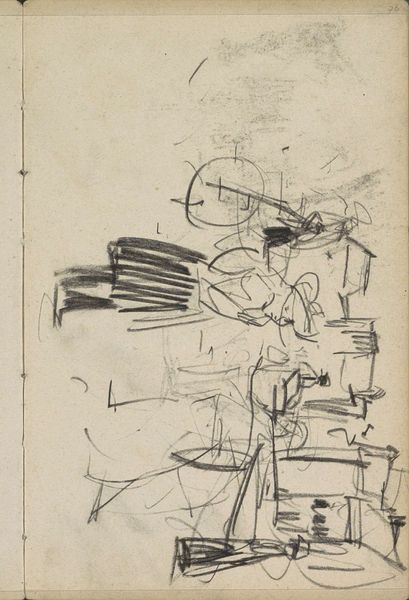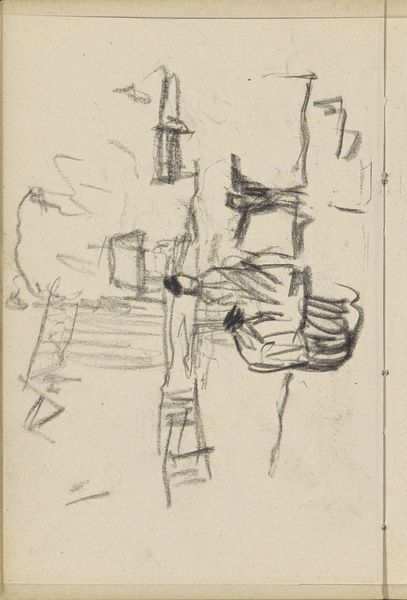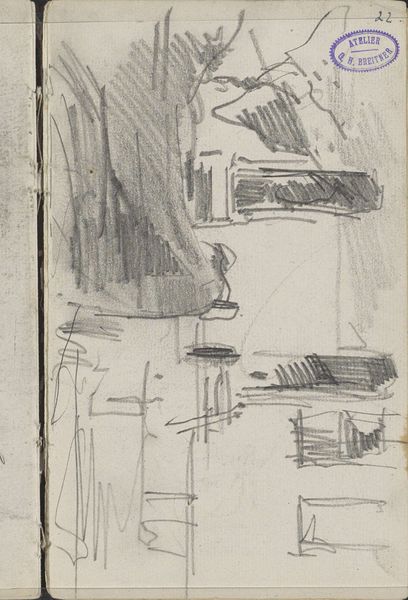
Copyright: Rijks Museum: Open Domain
Editor: This drawing, "Zittende figuren in een interieur," by George Hendrik Breitner, was made sometime between 1900 and 1923, using graphite and charcoal. There's a real sense of intimacy here, like catching a private moment. What do you see in this piece, beyond the charcoal strokes? Curator: It feels like peering into someone else’s memory, doesn’t it? Breitner’s choice of charcoal and graphite really softens the scene, making it feel both immediate and distant, like a half-forgotten dream. And figures almost melt into the furniture, blurring the lines between people and their surroundings. They are "zittende," that’s for sure… but at the same time almost ghosts. Editor: I noticed the way the figures blend into the background too. Does that suggest anything about their relationship, or perhaps about the artist's relationship to the scene? Curator: Perhaps Breitner sought to show us that human figures only appear to be separated from each other, when in fact they exist as a unified whole – which only appears when the barrier of space and ego disappear. Perhaps that space IS in fact what is meant by interior! What do *you* think? Editor: I’d never thought about "interior" having multiple meanings like that! The blurring lines do add to that feeling of introspection and shared space. Thanks for highlighting that, it really shifted my perspective. Curator: My pleasure. And for me, talking to you just confirmed something I’ve suspected for a long time: That art lives in those very liminal spaces between people!
Comments
No comments
Be the first to comment and join the conversation on the ultimate creative platform.

